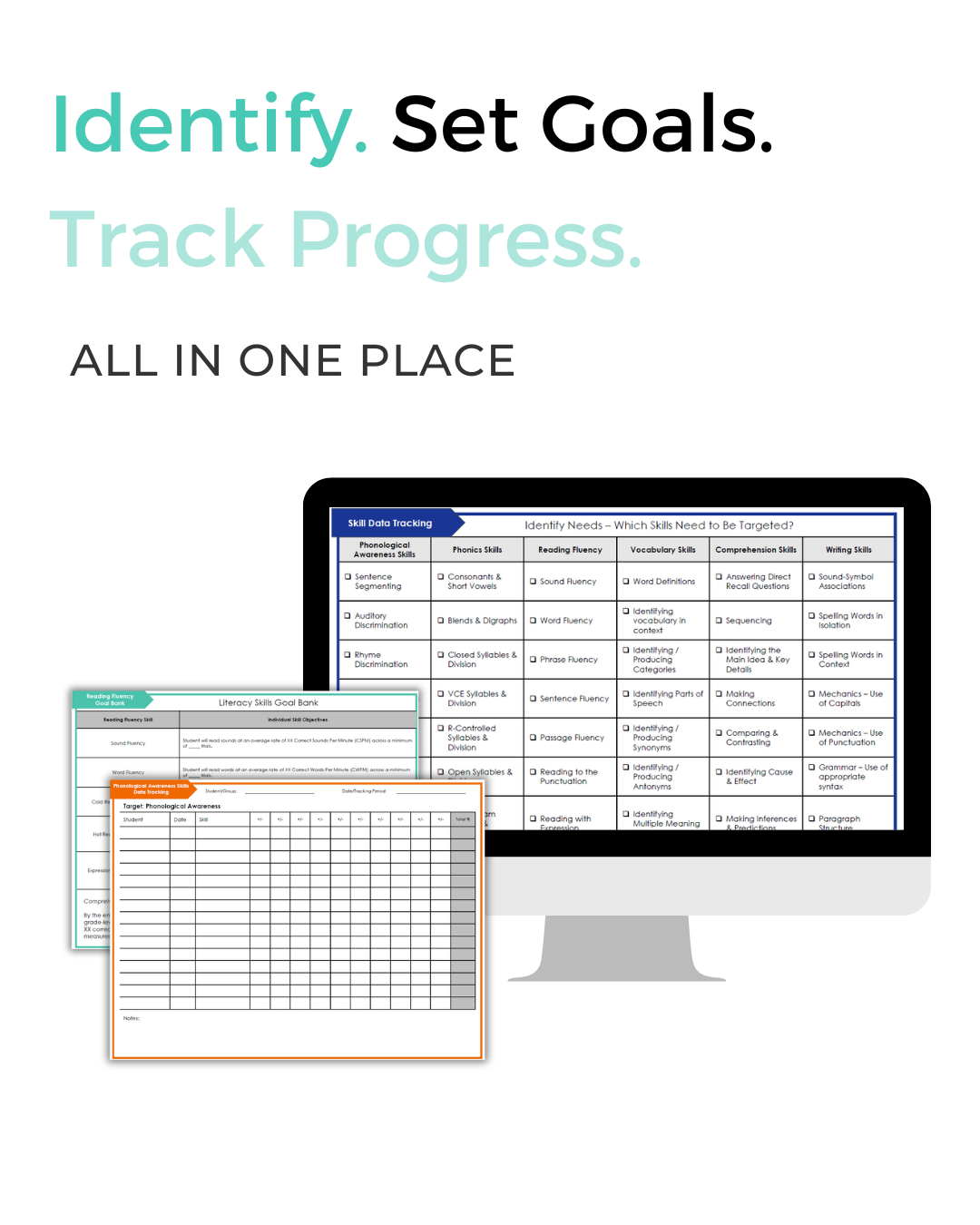Reading Intervention Year End Data Analysis
We’ll admit it, we absolutely love data. Not joking.
Why? Because data is your road map, your GPS for literacy intervention. It shows you how far students have come and where they need to go next. Taking time to analyze student data at the end of a cycle (whether that’s the end of a school year, a semester, or any major checkpoint) is one of the best ways to ensure continued growth.
This kind of analysis gives you a quick snapshot of overall performance and helps you:
Share meaningful updates with parents.
Provide clear information to other professionals working with the student.
Plan next steps for instruction or summer/holiday practice.
Focus on the Big 5 of Reading
When reviewing student progress in reading intervention, always look at performance across the five core components of reading:
Phonological Awareness
Phonics
Vocabulary
Reading Fluency
Reading Comprehension
How to Measure Each Component
Phonological Awareness
Assess blending, segmenting, or manipulating sounds.
For students needing deeper analysis, use a more comprehensive phonological awareness tracking tool.
Phonics
Monitor decoding accuracy for single- and multi-syllable words.
Consider organizing by syllable type if you’re using a structured, systematic phonics-based intervention.
Vocabulary
Track how well students can define or apply target words.
Use vocabulary graphic organizers during comprehension tasks.
Reading Fluency
Provide leveled passages and track Correct Words Per Minute (CWPM).
Use pre-counted passage sheets to make tallying quick and accurate.
Reading Comprehension
Ask questions about the main idea, key details, predictions, and inferences.
Score answers with rubrics or accuracy checks to see overall comprehension performance.
Why This Matters
By analyzing performance across the Big 5, you not only identify where a student is currently performing, you also highlight where breakdowns occur and what to target next.
This ensures:
Parents know exactly which activities will help keep their child on track between sessions.
Teachers and other professionals know which skills to reinforce in the classroom.
You, as the interventionist, have a clear plan for what to prioritize in upcoming lessons.
Instead of regression or lost time, you set students up for continued growth.
Next Steps for You
To make this process easier, we created a free data-tracking resource. Click here to grab it! It’s designed to keep your data organized across all five core components of reading.
Plus, we’ve also included a skills checklist and progress monitoring goal template so you have everything you need to organize your data and share out on results.
You don’t want to miss this!
And if you need to take this to the next level because you need a comprehensive progress monitoring toolkit to collect the data, we’ve got you covered there too…
Check out our full Progress Monitoring Made Simple professional development training and access hundreds of progress monitoring probes across phonological awareness, phonics, vocabulary, fluency, comprehension, and our writing rubric!


